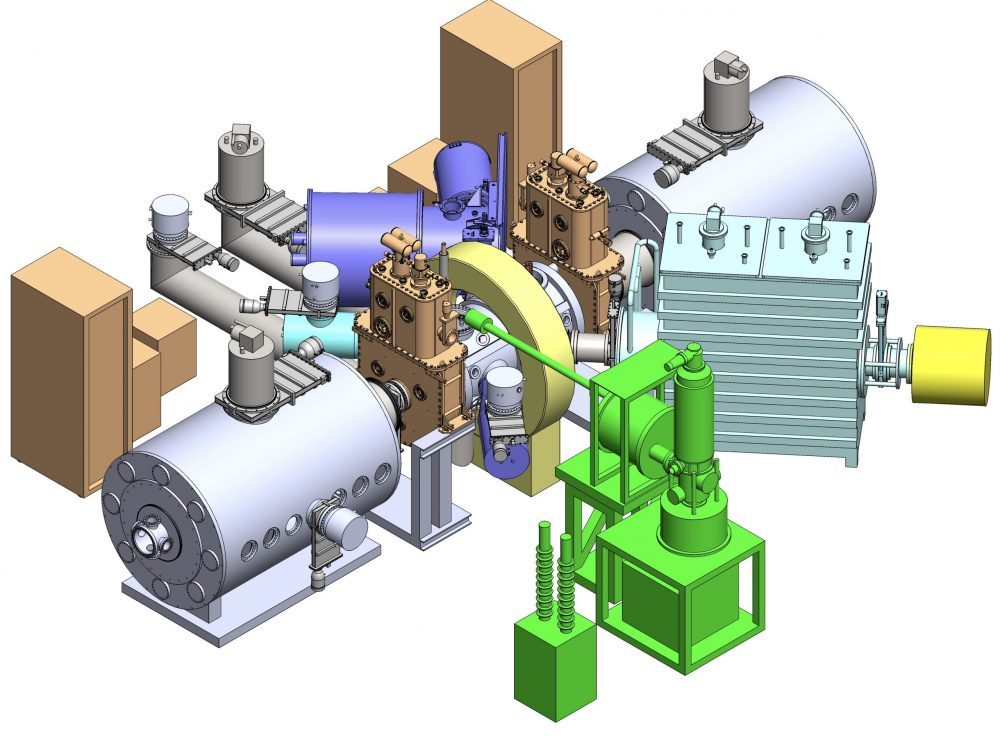When it comes to de-carbonizing energy production, nuclear fusion is one of the most promising technologies currently being studied. WHAM (the Wisconsin HTS Axisymmetric Mirror) is a prototype plasma fusion device developed initially through a $10M ARPA-E grant awarded in 2020 to UW–Madison, MIT and Commonwealth Fusion Systems (CFS). It was initially funded through a $10M ARPA-E grant awarded in 2020. Now, WHAM operates as a public-private partnership with Realta Fusion, Inc, a UW–Madison spinoff company that contributes the majority of current funding. WHAM is housed in the Physics Sciences Lab in Stoughton, WI.
WHAM is based on a decades-old fusion device known as a magnetic mirror, with one modern upgrade: incredibly powerful, high-temperature superconducting (HTS) magnets that are expected to contain plasma orders of magnitude better than previous versions. At 17 Tesla, these magnets set a world record in magnetic field strength for magnetically confined plasmas. WHAM also builds on recent physics breakthroughs in stability, critical technological advances in superconductivity, and the availability of high power reactor relevant heating systems.
On July 1, 2024, CFS delivered the HTS magnets to Stoughton, and they were installed, cooled, aligned and energized by the morning of July 15. First plasma was initiated by a high-power 110 GHz microwave beam, ionizing hydrogen atoms in a region of 4 T magnetic field, several centimeters from the bore of the 17 T mirror coils. With that noteworthy milestone, WHAM has transitioned into scientific operation phase.

Two mirror coils will be constructed using REBCO high temperature superconducting material by CFS (17 T mirrors). Hot and high density target plasmas will be created using high frequency ECH from modern gyrotrons. Fast sloshing ions will be created and energized by a novel RF heating scenario in which neutral beam injection is used to fuel ions which are then accelerated in situ to high energy by High Harmonic Fast Wave. Quasi-stationary plasmas (plasma duration >> ion slowing down and characteristic confinement times) will be created with electron temperatures of 1 keV, average ion energies of 20 keV and a densities that that approach the plasma pressure limit. The end product will be a realistic conceptual design of a low cost volumetric neutron source or as a realistic end plug for a tandem mirror. Finally, several lucrative off-ramps for this research have been identified that would lead to fusion neutron sources useful for academic and industrial purposes that may help accelerate progress towards fusion energy by stimulating additional investment.
